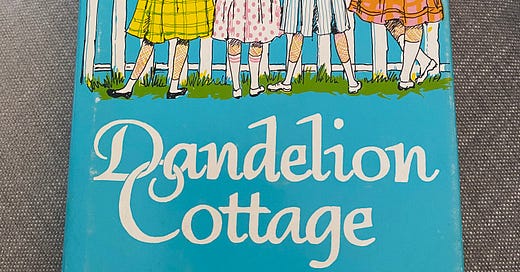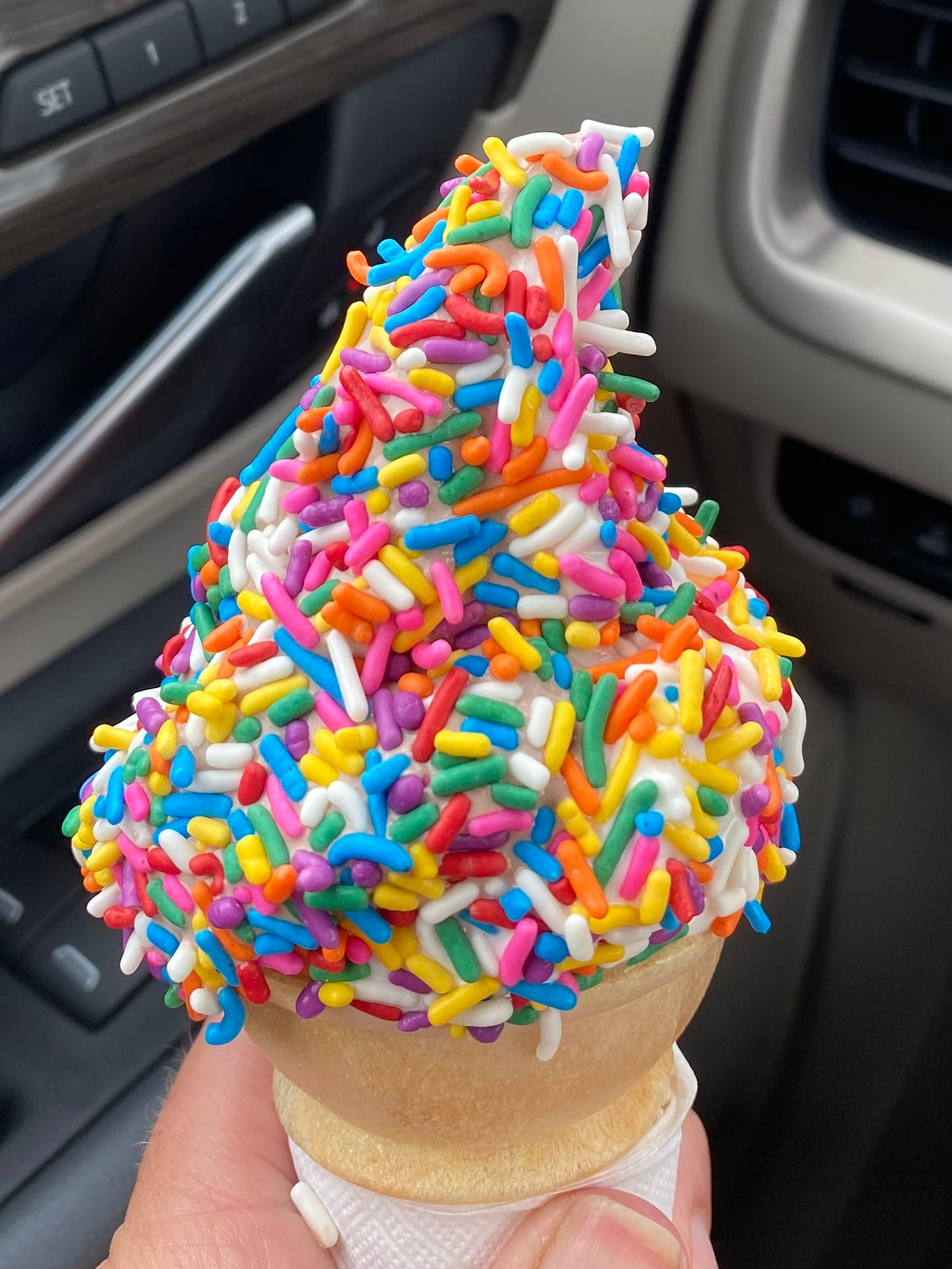One of my all-time favorite books is Dandelion Cottage by Carroll Watson Rankin. This story, from 1904, never fails to fill me with the good kind of longing. I am more than willing to dig up dandelions alongside Bettie, Jeanie, Mabel, and Marjory, in exchange for the use of a little cottage near Lake Superior. Playing house was my favorite thing (and I still quite like it, even if the bills are now real and the repairs are endless), and this book is about exactly that.
When I think of summer and Michigan and childhood (three topics I’m always returning to), I think of this book.
It’s probably because of connections with books like Dandelion Cottage that I often ask students to share their favorite books from childhood or adolescence. The stories people love tell so much about them, and from a teacherly point of view, these beloved plots and their methods are wonderful models.
Dandelion Cottage, and of course countless British novels, inspired my wistful desire to live in a house with a name. My Dad used to suggest “Wits’ End,” and I’m not against that; feels right. But what about Villa(!)/Bungalow/Cottage Maryannika? Annika, in case you don’t know, was Pippi Longstocking’s friend, and Maryannika (variously spelled) has been my nickname since forever. I’ve also considered Silver Maple House, because there is indeed a Silver Maple (a somewhat maligned tree, btw) out front. But that name seems a tad ho-hum. Actually, Ho-hum House would be good, and sounds like a kids’ book about discovering secret contentments. Should I go with that? Or what about Snapdragon House after the snapdragons in my garden that hustled on over to my neighbor’s yard, too, so that now we look like snapdragon specialists, which I guess we are. Snapdragons, with their fun-to-open “mouths,” are definitely a childhood memory for me. You too?
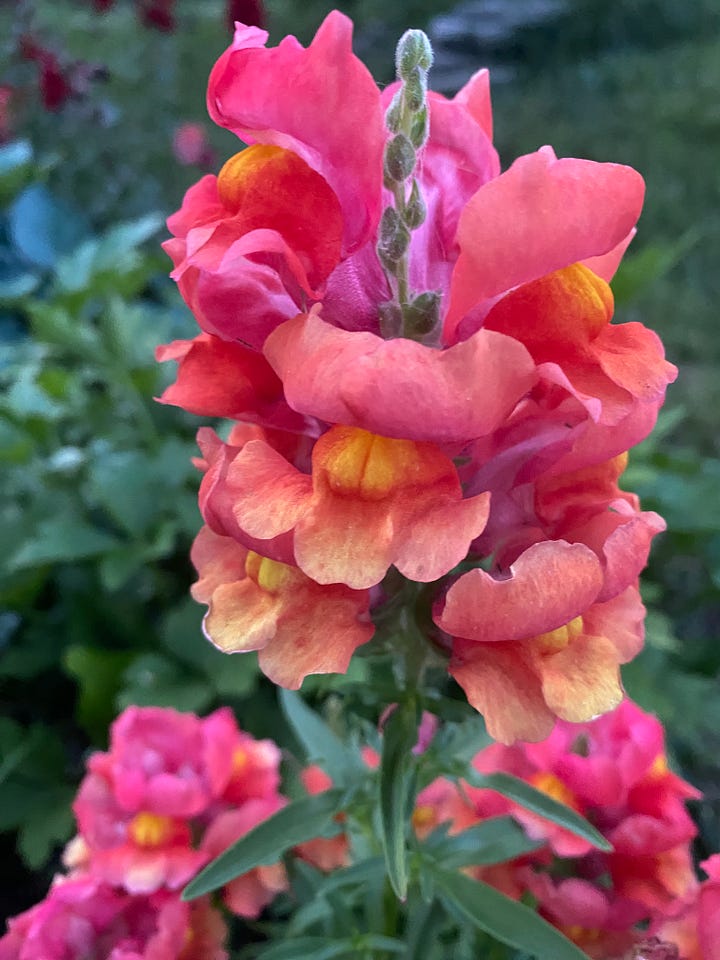
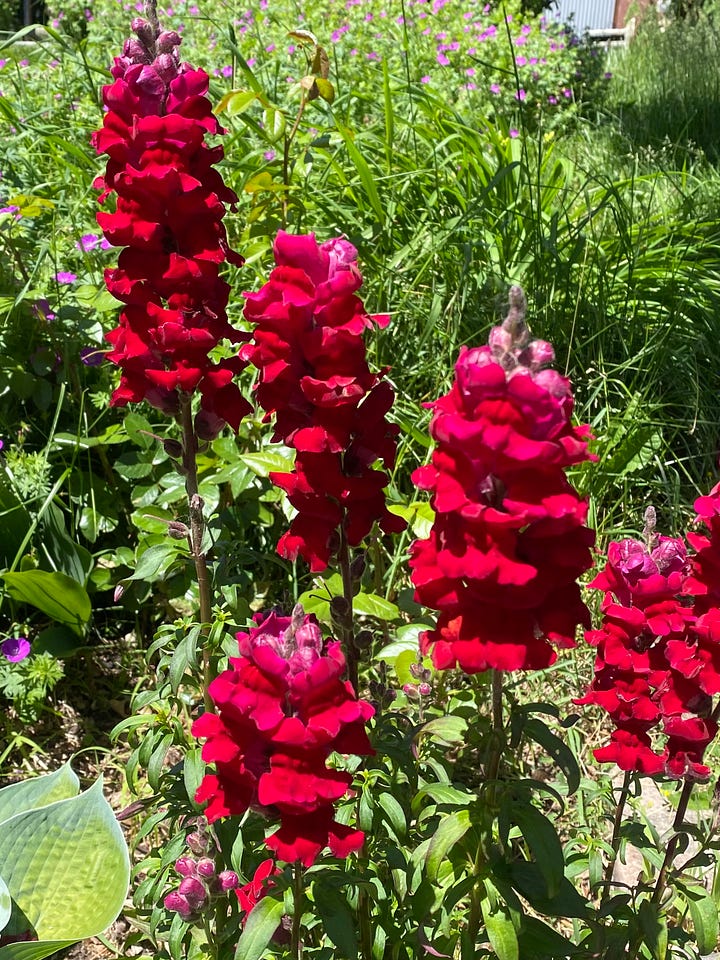
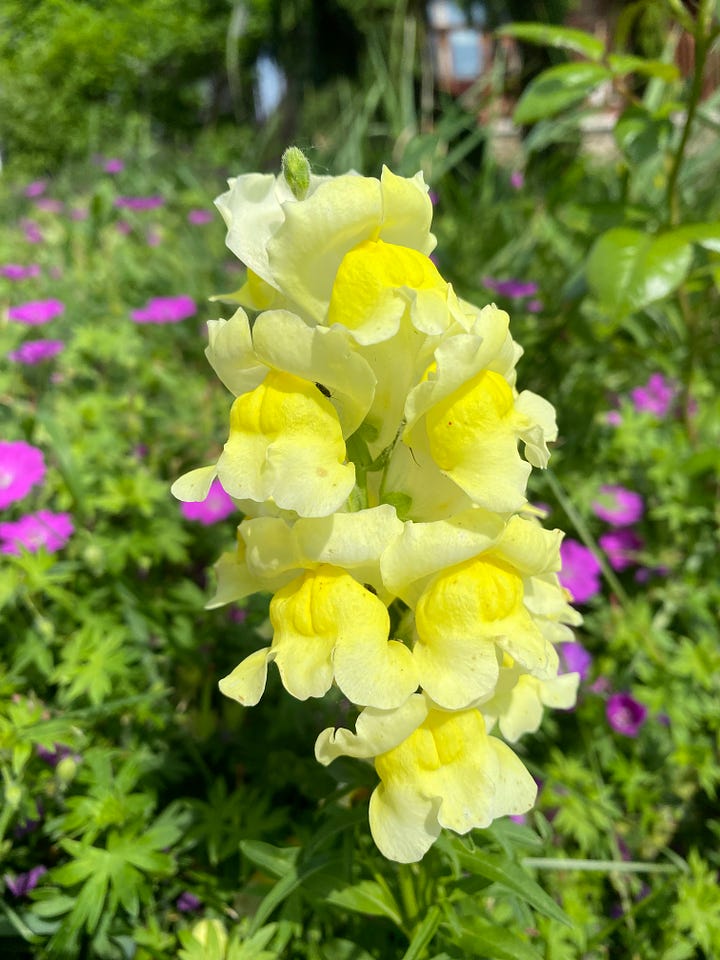
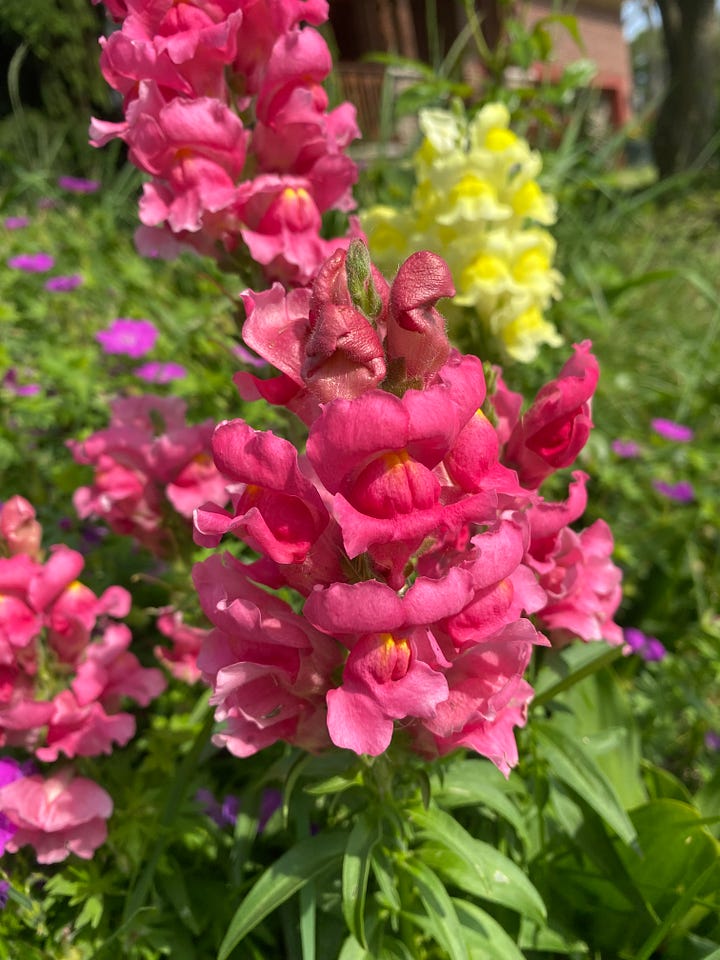
What about you, do you live in a house with a name? Or what would its name be if it had one? And what’s your favorite book from when you were young? When I next teach Writing for Children, what classic (or classic-to-you) should I keep in mind?
So it’s Summer — ah! — and I’ve been busy in the garden, planting and surveying what’s been planted and monitoring the smallest progress. I've also been returning to my gardening books. Here are some my favorites:
* The English Rose by David Austin * In the Garden: Essays on Nature and Growing edited by Daunt Books * The English Garden Abroad by Charles Quest-Ritson * Gertrude Jekyll on Gardening edited by Penelope Hobhouse * Lost Gardens of Gertrude Jekyll by Fenja Gunn * Making Things Grow Outdoors by Thalassa Cruso * Life in the Garden by Penelope Lively * Onward and Upward in the Garden by Katharine S. White * The Wild Braid: A Poet Reflects on a Century in the Garden by Stanley Kunitz with Genine Lentine * Handbook of Garden Projects for All Seasons by Nancy Bubel * On Flowers by Amy Merrick * 100 Flowers and How They Got Their Names by Diana Wells * The Flower Yard by Arthur Parkinson * Cut Flower Garden by Erin Benzakein with Julie Chai * Rhapsody in Green: The Garden Wit and Wisdom of Beverley Nichols, edited by Roy C. Dicks * The Gardener's Year by Karel Capek
And here are some gardening-adjacent books that I like to dip into during the summer.
* The Mediterranean Passion: Victorians and Edwardians in the South by John Pemble * Bitter Lemons of Cyprus by Lawrence Durrell * Letters from Leelanau by Kathleen Stocking * Diary of a Young Naturalist by Dara McAnulty * Life in the Studio by Frances Palmer
Can you suggest any others for education or inspiration?
Of course I’m also thinking of poets who have written about nature, gardens, landscape. Mary Oliver and Wendell Berry and so many others come to mind, of course, but also Robinson Jeffers with his stern music and Gerard Manley Hopkins with his lush religious fervor. It’s exciting when individual sensibility meets up with what any of us might encounter in the natural world.
Charles Wright has famously said that he writes about “language, landscape, and the idea of God.” One of my favorite poems of his is “Littlefoot, 19, [This is the bird hour],” which begins, “This is the bird hour, peony blossoms falling larger than wren hearts...”
This poem also includes these lines, which get me every time:
Is love stronger than unlove?
Only the unloved know.
I may have mentioned this before, but I once heard Charles Wright tell a young girl who came up to him after a reading just to write “everything you see and everything you don’t.” Not sure how she took that (!), but that advice is just so Charles and I’ll always remember it.
A good assignment would be to do just that: write everything you see and everything you don’t. Not so easy, of course, but that's one thing I'll be saying to writers in my Plein Air Poetry workshop on July 25 in Glen Arbor, Michigan. Spots still available!
I’ve been trying to take this advice myself, too, as I feel stuck these days in my own writing. Recently, a trusted friend advised I “notice the evening light” when I was feeling a bit off. No need to reduce nature to a mirror or antidote, no need to see it as ideal, but a poem that allows our current mood to mingle with observations of the natural world in their all its complexity is a powerful tonic.
Here’s a poem that observes interior and exterior and all the moods and allows everything, I think, to co-exist without solving the good mysteries. How boring would that be? Even Nancy Drew would be disappointed.
This poem first appeared in Air, Light, Dust, Shadow, Distance.
PROXIMAL
A word comes along and I keep it.
I believe what occurs because it occurs.
A habit developed over time.
The spider's web too works to perfection.
A tacit lesson.
Within earshot,
a little girl pledges her love to the lake.
The silence had been ravishingly beautiful.
Any change can be an improvement.
Sometimes I disagree but prefer not to fight.
June in the garden is definitely a mix of seen and unseen, or, rather, not-yet-seen. Will the dahlia tubers grow? Some have begun. Others, not yet. They always do come along, but that doesn’t mean I’m not fretful. Bad years happen.
My roses had a fabulous June last year and then a lot of nothing much. A bit too rainy.
This year, the roses are a mix of fast and slow. Here are the front runners.
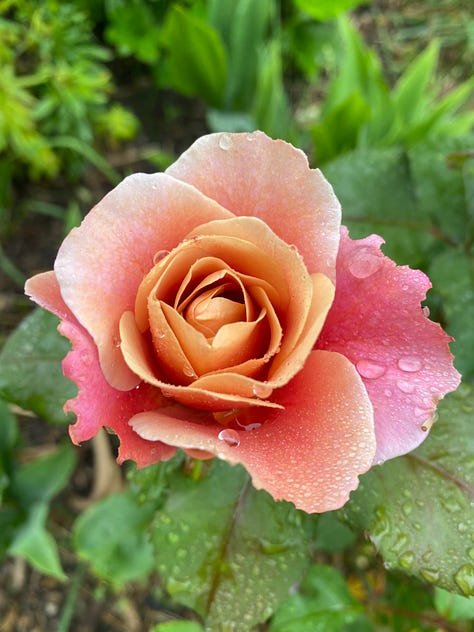
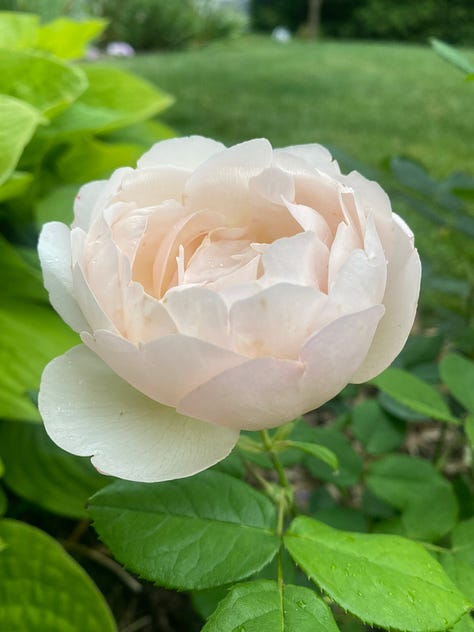
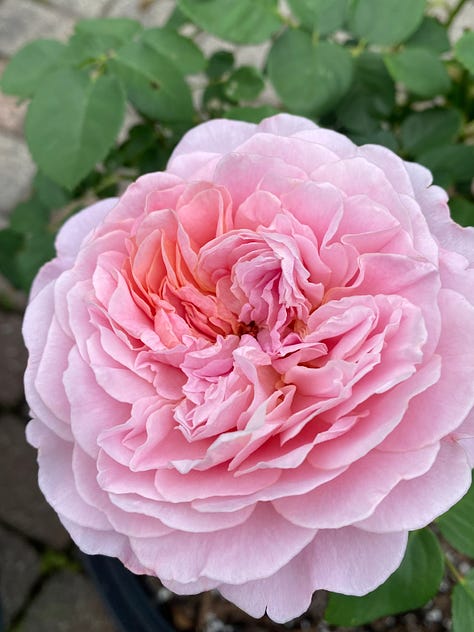
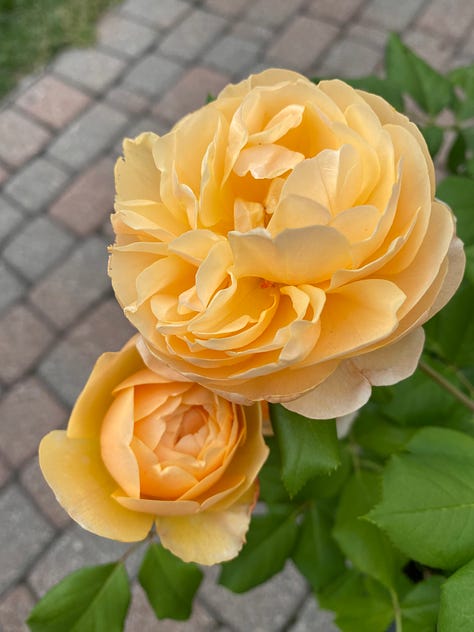
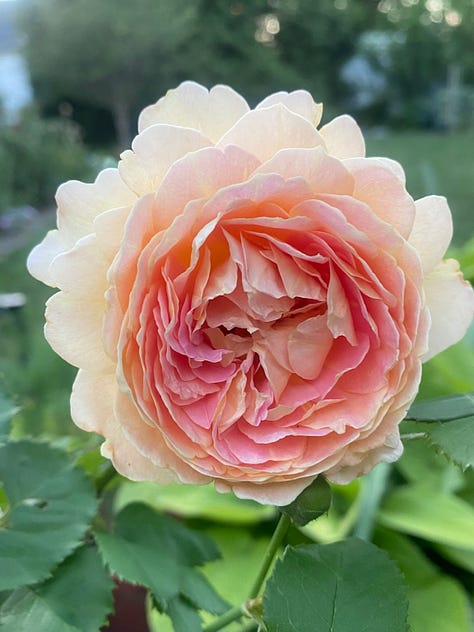
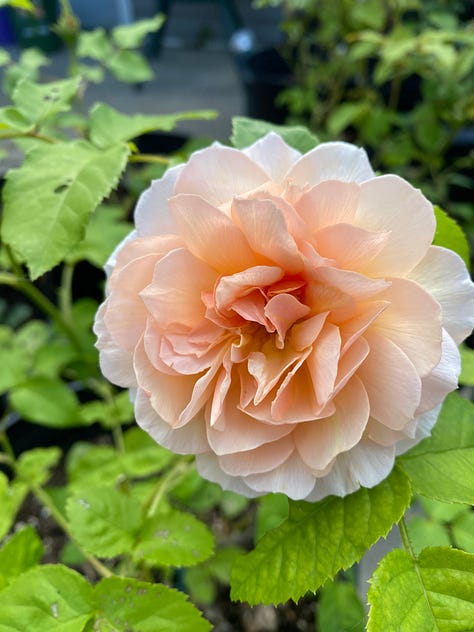
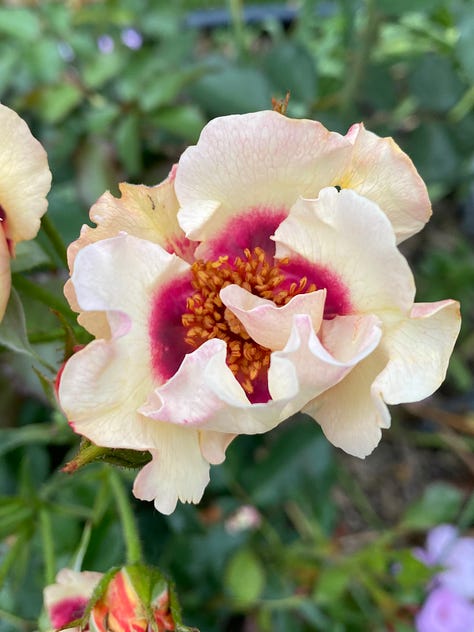
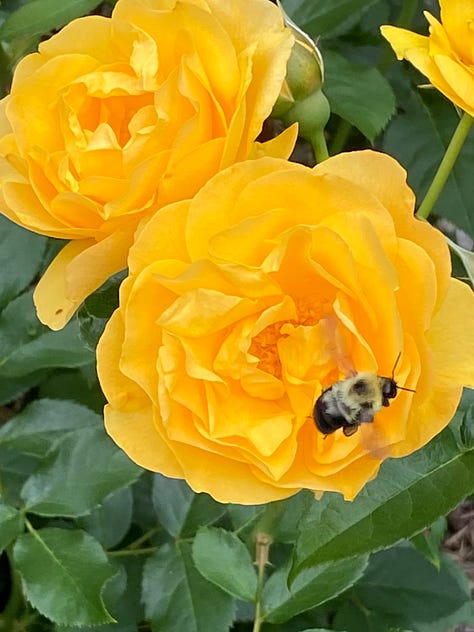
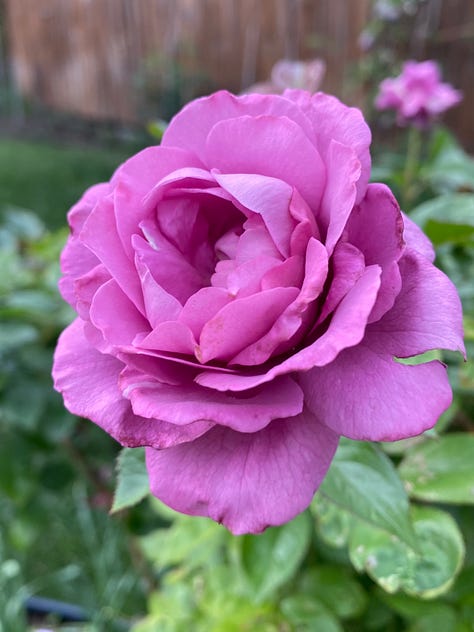
My best advice for growing roses: deadhead them to encourage more blooms. And yes, pest control matters and watering the right amount and all the rest, but also never underestimate the role of luck! And of course we can’t control the weather. Parallels to writing, and life, are easy to see.
And as Beverley Nichols has written, “In creating a garden we are creating — or endeavoring to create — a work of art.” Which means all the same joys and frustrations and private happinesses and occasional public accolades and mostly just the good work of it
Weaving, too, is, well, a weave, a mix, bits of this and that, colors and textures, knots and loops and fringes, and that’s what I love about it. Here are three recent weavings.
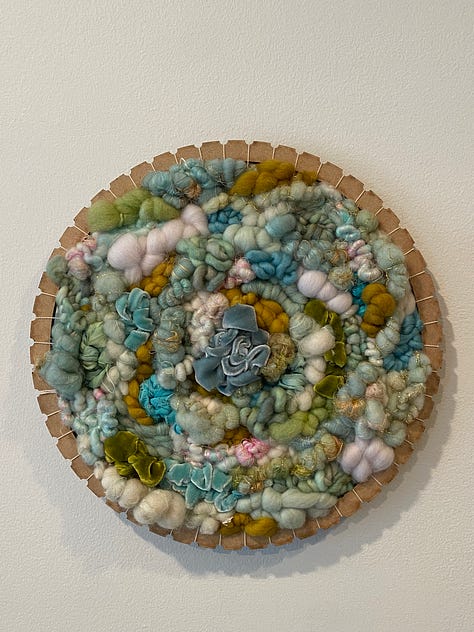
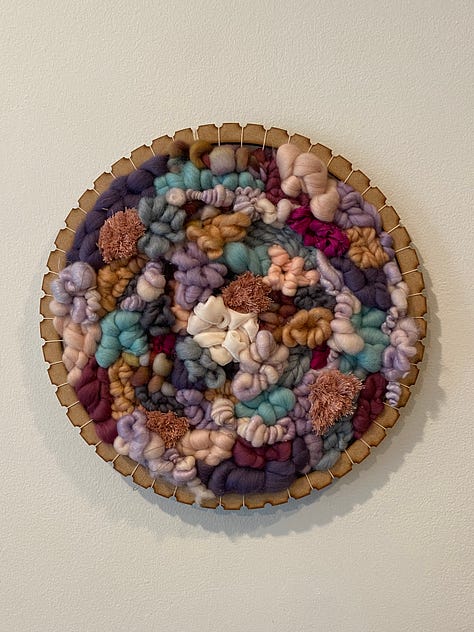
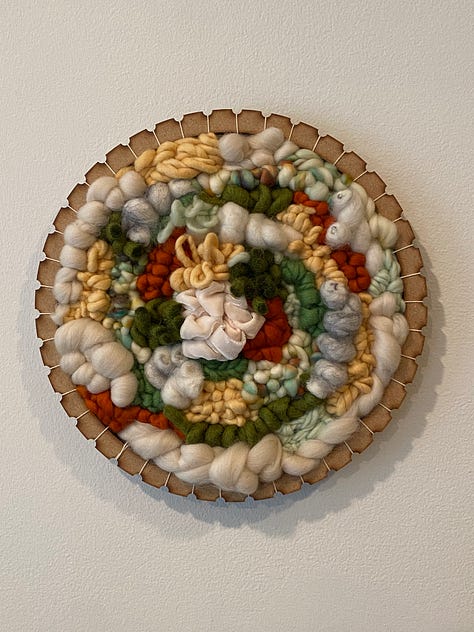
But wait—–! Lest you think this all sounds so productive and I have nothing but good habits, I assure you that that is not the case. Although the garden itself has been busy and I’ve done my part, overall I’ve felt a little wander-y these last few weeks. Which, I remind myself, is fine. The lulls are part of it. Part of what? Well, everything. But especially writing.
Still, I do sometimes get frustrated with myself when I go longer stretches quite removed from writing. But, Mary Ann, I remind myself (and yes, I really do call myself by name), you do all kinds of creative things! Cooking, baking, gardening, homemaking of all kinds, weaving, teaching, walking a new path around the neighborhood, and yes, sure, writing... it all counts! But also, why even get into the business of counting? Why not just enjoy yourself? Again: me to me. And to you, if you’d like.
And because I’m noticing and dismissing so-called problems: Cake & Poetry has been rather lacking in, well, cake, lately, hasn't it? Next post, I’ll do something about that, but for now, here’s a sweet treat as a reminder (to me! to you!) that summer is about supposedly unnecessary pleasures. I hope you’re treating yourself to something delicious and pretty and magical. There’s no reason not to.
Thanks for reading. Take good care and enjoy yourself this summer.

